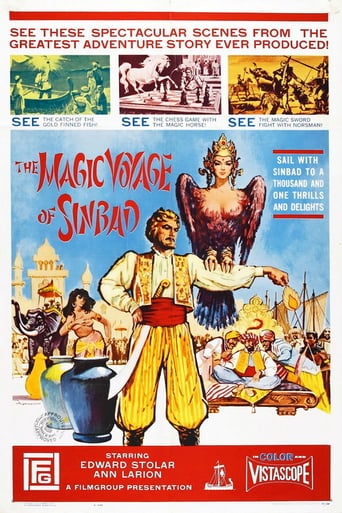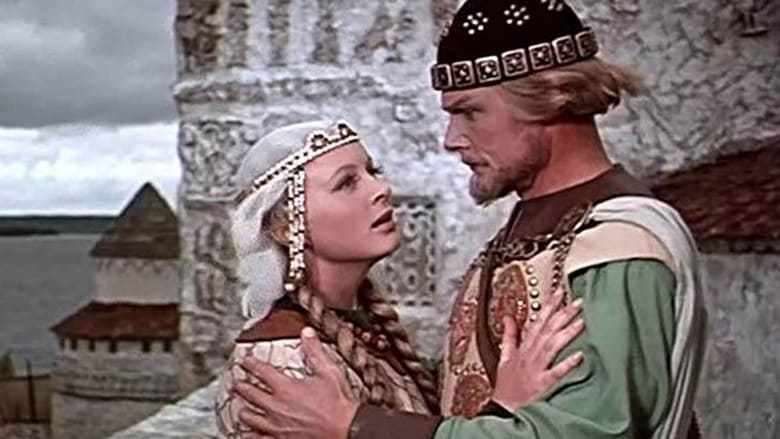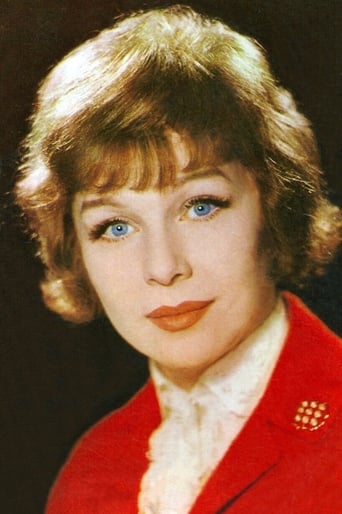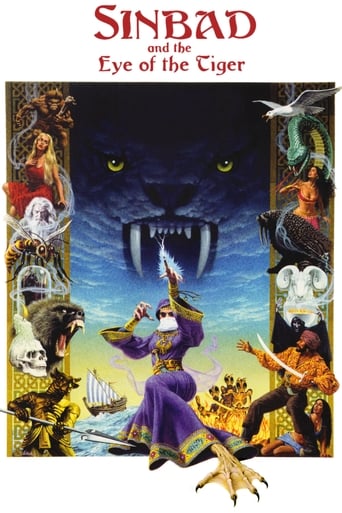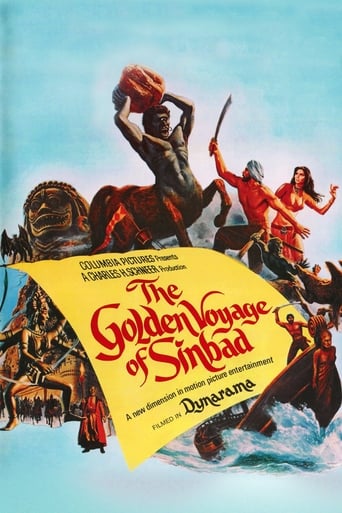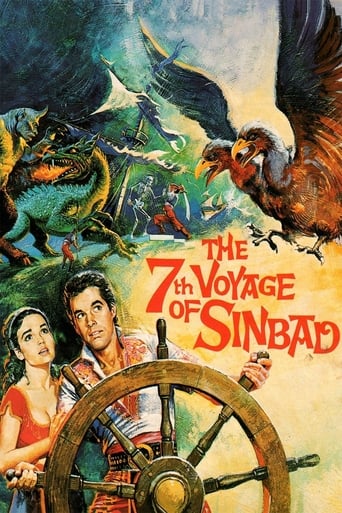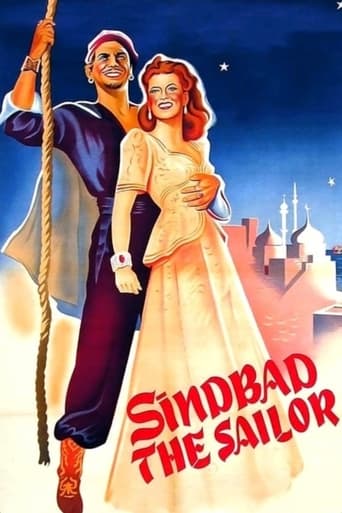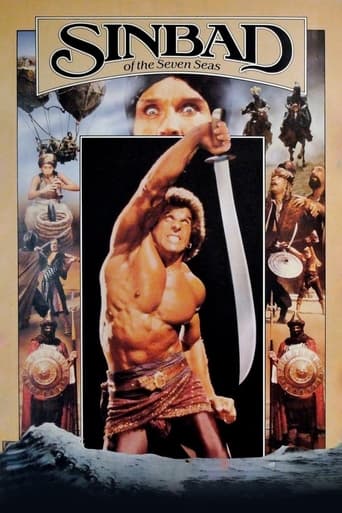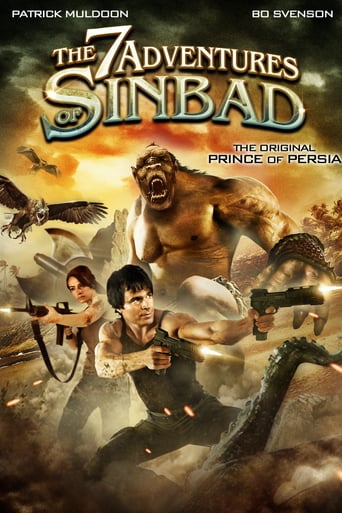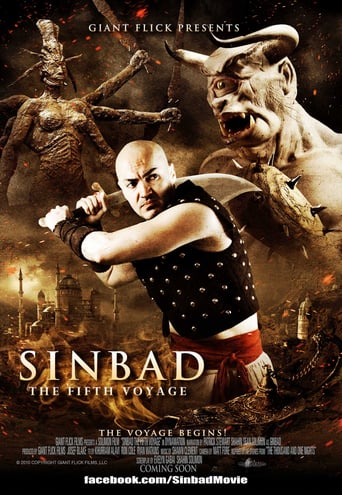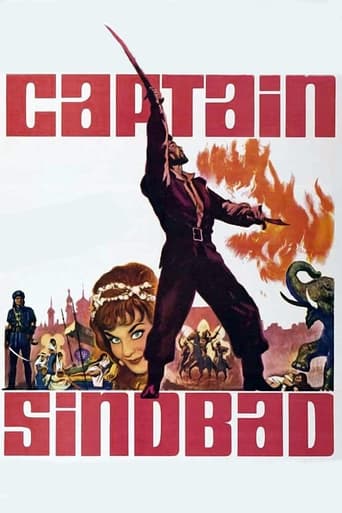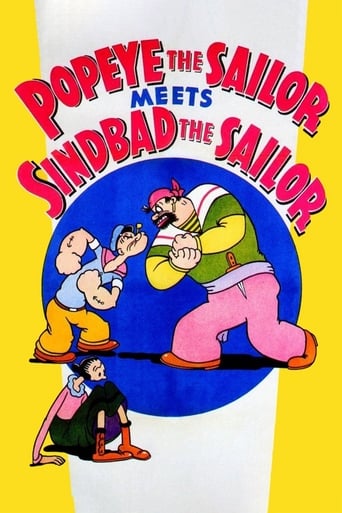The Magic Voyage of Sinbad (1953)
Sadko is based on an opera by Nikolai Rimsky-Korsakov, which was based on a Russian epic tale of the same name. In the old Russian city of Novgorod, the merchants are feasting in a gorgeous palace and Sadko is bragging that he can bring to their land a sweet-voiced bird of happiness. They laugh at him, but he is offered help by the Ocean King's daughter, who is mesmerized by Sadko's singing and is in love with him. The hero is destined to visit many lands in his search of the bird. First shown in the USA in 1953 with English subtitles. This entry is for 1962 English-dub by Roger Corman's Filmgroup, which runs about 8 minutes shorter (removes much of the music) than the Russian original (see, Sadko, 1953)
Watch Trailer
Cast


Similar titles
Reviews
Really Surprised!
Good concept, poorly executed.
The film never slows down or bores, plunging from one harrowing sequence to the next.
One of the most extraordinary films you will see this year. Take that as you want.
Brave and noble sailer Sinbad (the hopelessly wooden Sergei Stolyarov, who sports a wicked pointy Van Dyke beatnik beard) wants to bring happiness to the poor people in his land. When he discovers out that giving folks money and material goods doesn't do the trick, Sinbad decides to go on a perilous journey to find the fabled Blue Bird of Happiness. Boy, does this radically doctored American version of a popular Russian fantasy film possess all the right wrong stuff to qualify as an amusingly inane yukfest: we've got stiff acting, cruddy dubbing, ripe narration, an agonizingly poky pace, a drawn-out and meandering narrative (it takes over thirty minutes for Sinbad to finally embark on his quest!), infrequent and ineptly staged action scenes, a few inspired goofy touches (you gotta love Sinbad's laughing horse and the creepy singing bird lady), laughably lousy (not so) special effects, and a groan-inducing cornball climactic message. This honey hits its gloriously gut-busting campy zenith when Sinbad swims underwater and pays a visit to the legendary kingdom of Atlantis, which comes complete with a hearty king and a bitchy queen, a giant cheesy puppet octopus, and an equally tacky hand puppet catfish. Another hilarious sequence occurs when various foolhardy souls participate in a test to prove they got the correct tough stuff to be members of Sinbad's crew: Most of these dudes take a slug of hard liquor and get punched in the chest by Sinbad while one especially crazy guy wrestles a bear! And let's not forget the cringeworthy moment with Sinbad forlornly warbling a horrendous song next to a lake. An absolute kitschy hoot.
It is worth pointing out that the link provided for those who want to buy this film takes you to where the American-International version is being sold, with the title of The Magic Voyage of Sinbad. This is a long way from being the same film. The A-I version is black-and-white rather than color, shorter, and seems as if it is not really the same film. My Betamax copy of this has not been watched in years, but I am certain lacked half of the interesting scenes, and certainly lacks the wonderful music.The original version, as Sadko, can be rented from Netflix, and presumably is rented and sold elsewhere. It became available in the West only a few years ago in a dubbed format. It is a fantasy spectacle on a level with the Korda Thief of Baghdad.
Sadko (not Sinbad, ugh) is a hunk of a poet with a harp. He's got two girls in love with him: one is a nice village girl with a weird pigeon habit, and the other is the Princess of the Sea.... Clearly the thing to do is get out of town quick, so Sadko trades 3 goldfish for 3 boats (they were magic goldfish) and sets sail to find the Bird of Happiness. Along with a small army are Uncle Klepto, Big John, and Timmy the brash young mascot of the group -- these are not their actual names but they might as well be. The heroes are so cliché they're almost iconic.Sadko and Co. spend the rest of the movie traveling to exotic places and getting into trouble with the locals. They battle Vikings, and play chess with the King of India. They bet a laughing horse for the Bird of Happiness and discover her true nature is not what they thought. They fight and are heroic, and on the return trip a storm threatens to sink the ships, so Sadko goes to the bottom of the sea to soothe an argument between King Neptune and his wife by entertaining them with his harp. Although the Princess loves Sadko she knows he prefers the pigeon girl. She helps him get home again on a speedy seahorse.This is a very nice looking film. The story is fantastical without being too familiar. There is plenty of Russian flavor to make it semi-exotic to American tastes, and the Russian folk dancing is amazing. The special fx are charming and obvious, like stage tricks. When Sadko lifts a magic fish the light rays emitting from it are actually hundreds of metal wires sticking out of the fish! Most of the exotic locations are drawings, but the India sequence is full of elephants and dancing girls and over the top temples. The Bird of Paradise is satisfyingly surreal in a way that just wouldn't happen now with CGI. The final act in Neptune's Kingdom is a campy delight.I rate it 8 out of 10. I'd originally seen the Sinbad version and I had to turn the sound down. It was that bad, and obvious the visuals were from a better movie. I'm glad I saw the restored Russian version because the visuals are much clearer and the original soundtrack is pleasant with strong music and the deep serious voices of the men. The story also made a lot more sense. Highly recommend! Would love to see more of this kind of film.
This is an update to my comment which I wrote on April 28, 2005: This film (the original Russian film) has been completely restored by Mosfilm and is available on DVD in North-America from the Ruscico label, in most major outlets. The film restoration is incredible, the colours are vibrant and not a single frame is missing from the original elements. Furthermore, the Rimsky-Korsakoff music has been re-recorded in stereo and the sound is in 5.1 Dolby with lots of atmospheric surround effects. It comes with many extras, including two interviews with Stolyarov's son, who is not too kind to Francis Ford Coppola. I knew there was a masterpiece under all that grime and that bad sound. It just needed a lot of work. It's just too bad the release of the original did not receive one fifth the publicity of the Coppola atrocity ("The Magic Voyage of Sinbad"). By the way, the illustration on the IMDb "Sadko" page is not of this Russian film but of the opera version of the same name.This is my original comment of a year ago: I first saw 'Sadko' on television in French-speaking Quebec barely four years after it had been honoured at the Venice Film Festival. I was six years old at the time and the film was in French and in black and white. In those days of the Cold War, the French had no compunction about distributing Russian films and translating them into French and Canadian television had no compunction about showing this one to the very impressionable children it was meant to be shown to. This film was Russia's attempt to create a children's colour classic that would be on a par with 'The Wizard of Oz' and 'The Thief of Bagdad'. I think they succeeded admirably even though there is no denying its profound 'russianness'. 'Sadko' is based on a Russian fairy-tale that also inspired the opera of the same name by Rimsky-Korsakoff and it incorporates the opera's ballets and melodies in its action. The acting is exemplary of the Romantic operatic tradition somewhat tempered by the more realistic method acting of Stanislavsky. The hero is the very prototype of the rugged yet sensitive and (extremely)handsome peasant-poet who wants to bring happiness to the people of his city despite the active opposition, greed and selfishness of the fat, rich merchant capitalists who run the city of Novgorod. To achieve this, he goes searching for the legendary 'bird of happiness' but only finds, after many adventures, an Indian 'bird of forgetfulness', religion being the opium of the people, as Marx would have commented. He eventually comes to the same conclusion Dorothy comes to, 'There's no place like home'. The only way Americans have ever seen this film, for the most part, is through the emasculated version called 'The Magic Voyage of Sinbad' which, for purely exploitative reasons, turned this art film intended as a goodwill gesture for the world's children into a commercial adventure film by robbing it of its context (Sinbad was substituted for Sadko and Arabia for Russia), of its moral (all political speeches were mollified), of its characters (the love story was truncated), of its poetry (through a very bad translation) and of most of its glorious establishing shots. The original runs for 85 minutes and the Russian songs, music and acting make even the 'octopus's garden' scene palatable for adults. I thought I would have to spend a lifetime retracing this film in order to relive a very precious childhood memory. It took me months just to find out what the film's Russian title was and years to get my hands on two very bad VHS copies of 'The Magic Voyage of Sinbad' which have been bootlegged from television and which are offered by quite a few American distributors of offbeat cinema. I would recommend to anybody who is seriously interested in getting to know this film to do what I did. I made inquiries in the Russian gift shops of my city (Toronto) and eventually found a Mosfilm-approved PAL-to-VHS transfer of the original in Russian only without subtitles. This is no great loss in itself as the images and the music speak for themselves and the Russian speeches have a charm all their own. The strangeness of watching a Russian film without subtitles is also very liable to recreate in the viewer the very sense of wonder which children were supposed to experience when they first see this film. Unfortunately, even this 'official' video version is a poor transfer (although infinitely better than the American bootlegs), especially lacking in definition and solid colour and its hi-fi soundtrack suffers from a continual hiss. It suggests that the original could probably use a major (and costly) restoration. But it also shows that this film can boast great direction, magnificent composition, photography and lighting, elaborate art direction, impressive handling of crowd scenes, great costumes, evocative special effects (the bird of forgetfulness is a particularly powerful and memorable image) and a general poetic tone that is its reason for being and the first casualty of its American 'adaptation'. Here's hoping that it makes its way to a decent DVD transfer one of these days, and, why not, even a Criterion edition.

